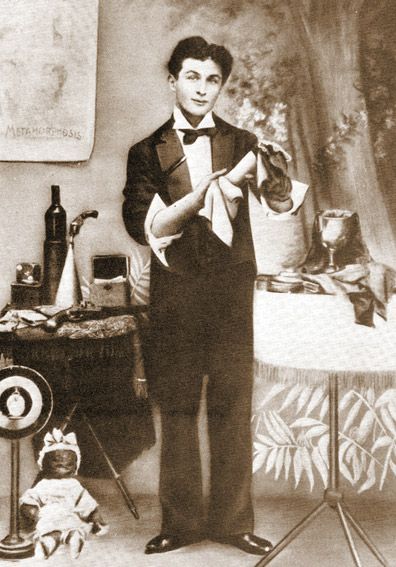


Vernon ‘lost’ the card twice and each time the card ended up on top of the deck. He then ‘lost’ the card in the deck and after the essential abracadabra the card appeared on top. He asked Houdini to pick a card and sign it with his initials. In February 1922, during the Society of American Magicians convention in Chicago, Dai Vernon a young unknown magician took up his challenge. Houdini proposed a challenge that if shown any trick three times in a row, he would be able to figure out how it was done. Houdini was considered ‘competent’ by his peers (among them Thurston, Vernon, Finley & Horowitz) the latter trio being pioneers in the use of the double-backed card and some but not all, professional magicians regarded him as a competent but not a particularly skilled sleight-of-hand artist, lacking both the grace and finesse needed to achieve excellence in the craft. When he began his career, he initially focused on traditional card tricks.

He began his magic career in 1891 appearing in a tent act with strongman Emil Jarrow performing in Dime museums and Sideshows, even doubling as ‘The Wild Man’ at a circus. Highlighting early cinema's relationship to the performing body, visual deception, storytelling, and the occult, Solomon treats cinema and stage magic as overlapping practices that together revise our understanding of the origins of motion pictures and cinematic spectacle.Before Harry Houdini became known for his death-defying escape acts and illusions, one of his many monikers was The King of Cards. The book also considers the previously overlooked roles of anti-spiritualism and presentational performance in silent film. Chapters detailing the stage and screen work of Harry Houdini and Georges M\u00e9li\u00e8s show how each transformed theatrical magic to create innovative cinematic effects and thrilling new exploits for twentieth-century mass audiences. The first to reveal fully how powerfully magic impacted the development of cinema, the book combines film and theater history to uncover new evidence of the exchanges between magic and filmmaking in the United States and France during the silent period. Where others have called upon magic as merely an evocative metaphor for the wonders of cinema, Matthew Solomon focuses on the work of the professional illusionists who actually made magic with moving pictures between 18.

&LI&LI&LI&/* Style Definitions */table.MsoNormalTableDisappearing Tricks revisits the golden age of theatrical magic and silent film to reveal how professional magicians shaped the early history of cinema.


 0 kommentar(er)
0 kommentar(er)
